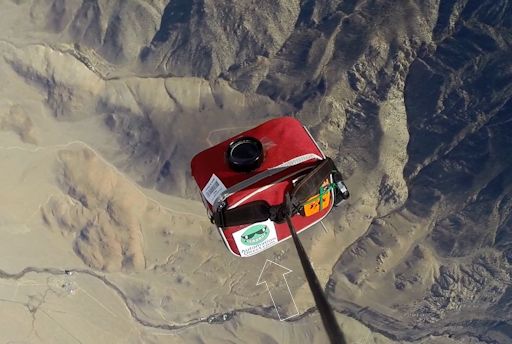Would you like a call when things are happening in the night sky? Sign up for backyard astronomy alerts from spaceweather.com: voice or text. | | |
A SCARY STORM MISSES EARTH: In July 2012, Earth had a close call with a solar superstorm, the kind of space weather event that could cause significant damage to our technological infrastructure. Fortunately, it missed. In a newly-released interview, NASA heliophysicist Lika Guhathakurta discusses what might have happened if the storm had enveloped our planet. Play it!
SMALL SUNSPOTS DON'T ADD UP: Today, the sun is peppered with spots, more than half a dozen. The visible ones are circled below in an Oct. 31st image from NASA's Solar Dynamics Observatory. If you add these sunspots all together, their combined areas amount to less than 10% of AR2192, the single monster sunspot that just rotated over the sun's western limb. (continued below)

So, while the sunspot count remains high, the sunspot area is low, and the chance of flares has dropped accordingly. NOAA forecasters estimate a scant 5% chance of X-flares this weekend, down from 55% just a few days ago when AR2192 dominated the solar disk. Stay tuned for quiet. Solar flare alerts: text, voice
Realtime Space Weather Photo Gallery
EDGE OF SPACE SOLAR ECLIPSE: There are many beautiful pictures of last Thursday's solar eclipse in the realtime photo gallery. Only these, however, were taken from the stratosphere:

On Oct. 23rd, just as the New Moon was about to pass in front of the sun, the students of Earth to Sky Calculus launched a helium balloon carrying a Nikon D7000 camera. Their goal: to set the record for high-altitude photography of an eclipse. During a two-hour flight to the edge of space, the camera captured 11 images of the crescent sun. The final picture, taken just a split second before the balloon exploded, was GPS-tagged with an altitude of 108,900 feet.
To put this achievement into context, consider the following: Most people who photographed the eclipse carefully mounted their cameras on a rock-solid tripod, or used the precision clock-drive of a telescope to track the sun. The students, however, managed the same trick from an un-stabilized platform, spinning, buffeted by wind, and racing upward to the heavens at 15 mph. Their photos show that DLSR astrophotography from an suborbital helium balloon is possible, and they will surely refine their techniques for even better photos in the future.
Hey thanks! The students wish to thank AutomationDirect.com for sponsoring this flight. Their $500 contribution paid for the helium and other supplies necessary to get the balloon off the ground. Note the Automation Direct logo in this picture of the payload ascending over the Sierra Nevada mountains of central California:

Another notable picture shows the payload ascending over clouds, which blocked the eclipse at ground level but did not prevent photography from the balloon.
Readers, would you like to sponsor a student research flight and have your logo photographed at the edge of space? Contact Dr. Tony Phillips to get involved.
Realtime Eclipse Photo Gallery
Realtime Comet Photo Gallery
Every night, a network of NASA all-sky cameras scans the skies above the United States for meteoritic fireballs. Automated software maintained by NASA's Meteoroid Environment Office calculates their orbits, velocity, penetration depth in Earth's atmosphere and many other characteristics. Daily results are presented here on Spaceweather.com.
On Oct. 31, 2014, the network reported 20 fireballs.
(16 sporadics, 2 Northern Taurids, 1 Orionid, 1 Southern Taurid)

In this diagram of the inner solar system, all of the fireball orbits intersect at a single point--Earth. The orbits are color-coded by velocity, from slow (red) to fast (blue). [Larger image] [movies]
Potentially Hazardous Asteroids (
PHAs) are space rocks larger than approximately 100m that can come closer to Earth than 0.05 AU. None of the known PHAs is on a collision course with our planet, although astronomers are finding
new ones all the time.
On October 31, 2014 there were potentially hazardous asteroids.
Notes: LD means "Lunar Distance." 1 LD = 384,401 km, the distance between Earth and the Moon. 1 LD also equals 0.00256 AU. MAG is the visual magnitude of the asteroid on the date of closest approach. | | The official U.S. government space weather bureau |
| | The first place to look for information about sundogs, pillars, rainbows and related phenomena. |
| | Researchers call it a "Hubble for the sun." SDO is the most advanced solar observatory ever. |
| | 3D views of the sun from NASA's Solar and Terrestrial Relations Observatory |
| | Realtime and archival images of the Sun from SOHO. |
| | from the NOAA Space Environment Center |
| | the underlying science of space weather |

